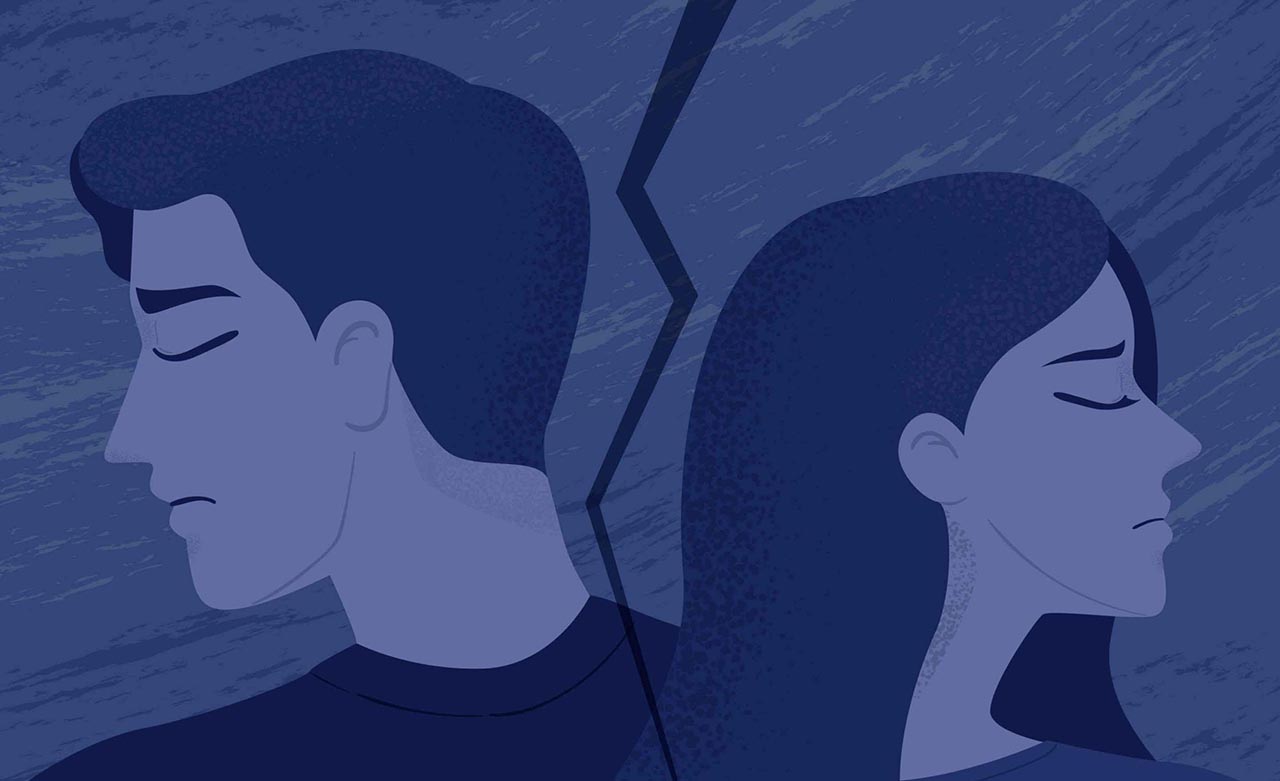Marriage as an institution is considered to be a sacred bond between two people and is often expected to last “forever” in India. It is not just the coming together of two individuals, but also the union and celebration between the families involved. Unfortunately, it is not always a joyful ride. When differences arise and start affecting the mental as well as emotional health of the partners and the family, the best option sometimes is to part ways.
Each year, several organisations conduct surveys regarding different social issues including divorce. In 2020, a report by the United Nations “Progress of the World’s Women 2019-2020: Families in a Changing World” revealed shocking data that brought up several questions regarding the “modernism” Indian people claim to adopt. It disclosed that the divorce rate in India is just 1.1%. This means that out of 1000 marriages in India only 13 results in a divorce which is hard to digest as major crimes in India occur silently within households only and sometimes even go unreported.
What are the reasons behind the low divorce rates?
1) Values and beliefs: Most of the marriages in India sustain on the need to maintain the reputation of the family in the society and divorce is therefore seen as “damaging” to the family name. This reason makes many people cross out the option to part ways as it gets tremendously difficult to convince the families who leave no stone unturned to get the partners to agree to keep going with the relationship. The traditional values and beliefs embedded in society’s mind many times make the life of the divorcee hard and filled with shameful looks from the people around. Therefore, to escape all the humility and the struggle which would enter life after taking such a decision, many people keep living a marriage of regret rather than trying to find happiness outside of their current marriage sphere.

2) Morality over Legality in courts: Indian courts resort to the option of sending couples in several never-ending and sometimes mentally painful sessions of counseling before actually announcing their judgement on the divorce case. It is not very easy to get a divorce in India as it is a long legal process where the judges also focus on the possibility of reconciliation, rather than letting the couples part ways. There is no doubt that sometimes these sessions do help the marriages and the partners are able to work on their marriages better than before, but usually the couples end up agreeing to live a life of compromise rather than a life of contentment during the process of counseling.
3) “Saving” children from the trauma: While research has shown that divorce has positive sides as well like improving grades of the child as they no longer are required to cope up with the fights at home, parents parting away can also cause a traumatic effect on a child’s mind. It not only causes stress and anxiety but also affects the long term behavioural pattern of the child and the way he perceives a relationship to be. Therefore to prevent their child/children from slipping into depression or making compromises in their life and education standards, parents often totally rule out divorce as an available option and switch to leading a half-hearted life for the sake of their child’s life.

4) Future financial struggles: Financial outlooks of various individuals change rapidly after getting a divorce. Life sometimes can be increasingly difficult for those who do not have a stable income or a job. Moreover, families having income coming from both the parents suffer to get back to their former living standards as it usually takes time, or is not possible at all to make up for the second income. Apart from the lifestyle, the child custody payments and the overall cost of divorce is also very high, which sometimes gets hard for the individuals to afford.
5)The “privilege” of divorce as an option unavailable to many women in rural areas- Studies have shown that most of the divorce cases in India come from urban areas. This in no way means that the ones in the rural spaces are living a happy life. The low cases from the underdeveloped areas are majorly because women do not even possess the basic rights and even the thought of filing a divorce, and getting one is a far fetched dream for them. Women who try to protest are made to forcefully “settle” with the ongoing conditions of their married life and therefore, this results in an overall low rate in the divorce cases data of India.
6) Separated couples usually don’t file for a divorce- Another major reason why India stands at just 1.1% divorce rate is that the individuals who separate, do not find it necessary to get “legally separated” i.e. take a divorce. It is important to note that separation just means the couple living apart and there is no legal obligation on them to file a petition to live separately. There are several reasons why a couple may or may not file a divorce despite living away for years. It might be because of religious views, fear of society, or the financial costs involved in a divorce process. It, therefore, results in the lack of accurate data regarding the divorce rate.
What are the causes of divorce?
A marriage usually does not end based on just one issue, instead, several factors contribute to the final decision which makes the person finally gather enough courage to seek a divorce. The three most commonly observed reasons for divorce are given below-
1) Domestic Violence- It is a common belief that domestic violence generally includes physical abuse inflicted by one partner on the other, but in reality, it is a vast concept which deteriorates the mental and emotional health of the victim and the family as well. Studies have shown that it is a cycle which tends to build itself and grow its roots in the relationship over a period of time. Unfortunately, a crime as heinous as domestic violence which degrades the mental health of the abused constantly is one of the most underreported crimes in the world.

2)Drug Abuse-It is of no wonder that many marriages end because of one partner’s habit of drug/substance abuse which makes the married life difficult to sail for the other person. Addictions lead to a breach in trust and many times bring in communication issues if the abuser refuses to seek treatment when advised to. It damages the smooth ongoing life as the addict centers his/her whole life around the drugs and ways to acquire it, forgetting the needs and wellbeing of the family. Not only is the drug harmful to the abuser himself but also to the long term financial health of the family to sustain and live a standard healthy life.

3)Infidelity/Extra Marital Affair- A study conducted by the American Psychological Association (APA), showed that infidelity is one of the reasons which cause the most damage to a couple’s married life. Another important thing to understand the existence of the fine line which highlights one partner’s unfaithfulness as the cause of divorce or the marital affair as an indication of the existing issues between the couple. After the disclosure of the hidden affair, it not only becomes difficult for one partner to trust again, but also sometimes permanently undermines one’s ability to hold intimate bonds with the other person again. Therefore, partners tend to part ways when things reach an irreparable stage.

Life after divorce in India
In India, getting a divorce is not as easy as it seems and it is quite a tedious task. Divorce in many cases may bring harmony and peace in one’s life which was previously absent, but the after-effects of divorce still do not cease to affect them. Life can get extremely traumatic and depressing initially, along with a need to turn a blind eye towards the social talks and attitudes of the people.
Research by the Journal of Family Psychology shows that a divorcee usually has a lower life satisfaction than couples who remain married. But this data does not necessarily mean that in every case life gets worse after divorce. The way divorce is seen varies but mostly it is affected by the cultural and religious perspectives of the people and not to forget the evil of patriarchy prevalent in society for decades.
Though the possibility of improving and getting better off after divorce always exists, the exhausting process is something that no individual should be made to face alone. It gets extremely hard to cope up without the family’s support and there is a constant need for the society to understand the relevance and importance of divorce; how it opens the wide opportunities and doors of happiness to many individuals who had been silently suffering throughout their marriage duration previously. The decision should be taken in accordance with what the individual wants and thinks, is the best for the family as well as for himself, and should in no case be based upon how the society would later perceive him/her.


